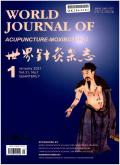Electroacupuncture for postoperative recovery of gastrointestinal function in patients with gastrointestinal cancers: A systematic review and meta-analysis
IF 1.3
4区 医学
Q4 INTEGRATIVE & COMPLEMENTARY MEDICINE
引用次数: 0
Abstract
Objective
To evaluate the efficacy and safety of electroacupuncture (EA) for postoperative recovery in patients with gastrointestinal (GI) cancers.
Methods
We retrieved articles from PubMed, Embase, OVID, Cochrane Library, Web of Science, CINAHL, SinoMed, China National Knowledge Infrastructure (CNKI), Wanfang, and Technology Journal Database (VIP) from database inception to November 1, 2024. Randomized controlled trials (RCTs) that examine the use of EA to improve GI function, reduce pain, and promote ability ofself-care after GI cancer surgery were included. Based on the type of control interventions, separate meta-analyses were conducted for EA vs postoperative nursing (PN) and EA vs sham acupuncture (SA). The primary outcomes were the time to first flatus (TFF) and the time to first defecation (TFD). The secondary outcomes included the time to recovery of bowel sounds (TRBS), the time to tolerance of liquid diet (TTLD), the time to tolerance of semiliquid diet (TTSD), the time to independent walking (TIW), the length of hospitalization (LH), and visual analog scale (VAS) immediate resting pain scores measured on the first, second and third postoperative days (POD 1–3). Results are reported as mean differences (MDs) with 95 % confidence intervals (CIs). RevMan 5.3 was used for meta-analysis, StataSE 15.1 was used for sensitivity analyses and Egger’s tests. This study was registered on PROSPERO (CRD42022314754).
Results
A total of 19 RCTs involving 1902 participants were included, all of which were conducted in China between 2004 and 2023. When EA compared with PN, the meta-analysis showed EA significantly reduce TFF (n = 673, MD = -13.14, 95 % CI = [-18.97 to -7.31], P < 0.00001), TFD (n = 598, MD = -19.86, 95 % CI = [-27.83 to -11.89], P < 0.00001), TRBS (n = 216, MD = -12.44, 95 % CI = [-15.00 to -9.87], P < 0.00001), TTLD (n = 268, MD = -18.14, 95 % CI = [-24.98 to -11.29], P < 0.00001), TTSD (n = 141, MD = -20.44, 95 % CI = [-33.84 to -7.04], P = 0.003), VAS on POD 1 (n = 299, MD = -0.52, 95 % CI = [-0.92 to -0.11], P = 0.01), VAS on POD 2 (n = 256, MD = -0.91, 95 % CI = [-1.23 to -0.60], P < 0.00001), VAS on POD 3 (n = 203, MD = -0.57, 95 % CI = [-0.80 to -0.34], P < 0.00001), while no significantly decreasing in the LH (n = 322, MD = -1.16, 95 % CI = [-2.56 to 0.24], P = 0.10). As EA compared with SA, EA could significantly reduce TFF (n = 782, MD = -15.78, 95 % CI = [-24.96 to -6.60], P = 0.0008), TFD (n = 782, MD = -20.42, 95 % CI = [-36.14 to -4.70], P = 0.01), LH (n = 782, MD = -1.37, 95 % CI = [-2.69 to -0.05], P = 0.04), TIW (n = 743, MD = -0.33, 95 % CI = [-0.62 to -0.04], P = 0.03).13 studies reported that EA reduced the incidence of postoperative complications, and 7 studies reported safety assessments of acupuncture-related adverse events, including hematoma, residual needling, sharp pain, pain, soreness or swelling after needle removal, with no serious adverse events.
Conclusion
EA can significantly promote the recovery of GI function, reduce postoperative pain, enhance ability of self-care in patients undergoing surgery for GI cancers.
电针治疗胃肠道肿瘤患者术后胃肠功能恢复:一项系统综述和荟萃分析
目的评价电针(EA)治疗胃肠道肿瘤患者术后恢复的疗效和安全性。方法检索PubMed、Embase、OVID、Cochrane Library、Web of Science、中国医学信息图书馆(CINAHL)、中国医学信息网(SinoMed)、中国知网(CNKI)、万方、科技期刊数据库(VIP)自建库至2024年11月1日的文章。纳入了随机对照试验(RCTs),研究了胃肠道肿瘤手术后使用EA改善胃肠道功能、减轻疼痛和促进自我护理能力的情况。根据对照干预的类型,分别对EA与术后护理(PN)、EA与假针灸(SA)进行meta分析。主要观察指标为首次排气时间(TFF)和首次排便时间(TFD)。次要结果包括肠音恢复时间(TRBS)、流质饮食耐受时间(TTLD)、半流质饮食耐受时间(TTSD)、独立行走时间(TIW)、住院时间(LH)以及术后第1、2和3天(POD 1-3)的视觉模拟量表(VAS)即时静息疼痛评分。结果以95%置信区间(ci)的平均差异(md)报告。meta分析采用RevMan 5.3,敏感性分析和Egger检验采用StataSE 15.1。本研究已在PROSPERO注册(CRD42022314754)。结果共纳入19项随机对照试验,受试者1902人,均于2004 - 2023年在中国进行。与PN比较,meta分析显示EA显著降低TFF (n = 673, MD = -13.14, 95% CI = [-18.97 ~ -7.31], P <;0.00001), TFD (n = 598, MD = -19.86, 95% CI = [-27.83 ~ -11.89], P <;0.00001), TRBS (n = 216, MD = -12.44, 95% CI = [-15.00 ~ -9.87], P <;0.00001), TTLD (n = 268, MD = -18.14, 95% CI = [-24.98 ~ -11.29], P <;0.00001), TTSD (n = 141, MD = -20.44, 95% CI = [-33.84 ~ -7.04], P = 0.003), POD 1 VAS (n = 299, MD = -0.52, 95% CI = [-0.92 ~ -0.11], P = 0.01), POD 2 VAS (n = 256, MD = -0.91, 95% CI = [-1.23 ~ -0.60], P <;0.00001), POD 3 VAS评分(n = 203, MD = -0.57, 95% CI = [-0.80 ~ -0.34], P <;0.00001),而LH无显著降低(n = 322, MD = -1.16, 95% CI = [-2.56 ~ 0.24], P = 0.10)。与SA相比,EA可显著降低TFF (n = 782, MD = -15.78, 95% CI = [-24.96 ~ -6.60], P = 0.0008)、TFD (n = 782, MD = -20.42, 95% CI = [-36.14 ~ -4.70], P = 0.01)、LH (n = 782, MD = -1.37, 95% CI = [-2.69 ~ -0.05], P = 0.04)、TIW (n = 743, MD = -0.33, 95% CI = [-0.62 ~ -0.04], P = 0.03)。13项研究报告EA降低了术后并发症的发生率,7项研究报告了针刺相关不良事件的安全性评估,包括血肿、残针、刺痛、拔针后疼痛、酸痛或肿胀,无严重不良事件。结论ea能显著促进消化道肿瘤手术患者的消化道功能恢复,减轻术后疼痛,提高生活自理能力。
本文章由计算机程序翻译,如有差异,请以英文原文为准。
求助全文
约1分钟内获得全文
求助全文
来源期刊

World Journal of Acupuncture-Moxibustion
INTEGRATIVE & COMPLEMENTARY MEDICINE-
CiteScore
1.30
自引率
28.60%
发文量
1089
审稿时长
50 days
期刊介绍:
The focus of the journal includes, but is not confined to, clinical research, summaries of clinical experiences, experimental research and clinical reports on needling techniques, moxibustion techniques, acupuncture analgesia and acupuncture anesthesia.
 求助内容:
求助内容: 应助结果提醒方式:
应助结果提醒方式:


